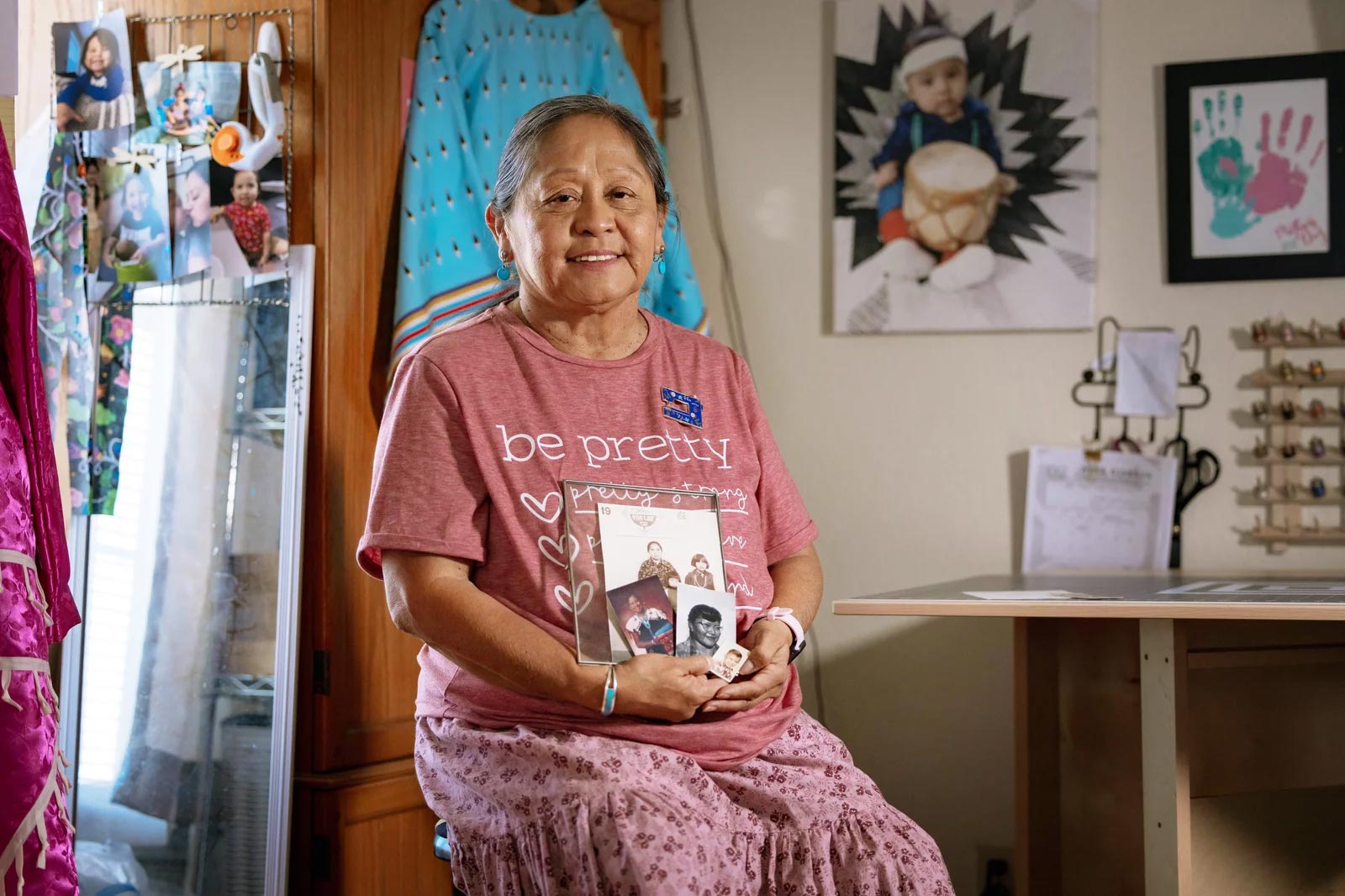 VIEW LARGER Navajo citizen Lorenda Long, who attended a federal boarding school as a young girl, is a supporter of students at Riverside Indian School today.
VIEW LARGER Navajo citizen Lorenda Long, who attended a federal boarding school as a young girl, is a supporter of students at Riverside Indian School today. Facing the busloads of tribal citizens were U.S. Secretary of the Interior Deb Haaland and Assistant Secretary Bryan Newland. They traveled from Washington to listen for as long as people wanted to speak. The subject at hand? The very place they were sitting.
The gym now shines with new equipment and has a wall dedicated to the "Tribes of Riverside." A symbol of the new Riverside, one with a majority Native staff and an emphasis on cultural practices. But for many of the people here, Riverside Indian School was once a waking nightmare.
One of the first to speak was an 85-year-old man with short salt-and-pepper hair who used a walker to steady himself. Donald Neconie attended this school more than 60 years ago.
"It was 12 years of hell," he told the officials. He recounted for Haaland and Newland how, when he first arrived at the school, the staff treated him like a prisoner.
"The moment I landed there, they took me downstairs, took all my clothes off, and threw a bunch of green stuff all over me," Neconie said.
He described his time here as an experience marked by abuse — both emotional and physical — and said that certain teachers would routinely beat students for acting up or just for speaking their own language.
The experiences were so awful that when one of the buildings at Riverside, known as Kiowa lodge, burned down, he stood by and cheered: "I laughed when they tore it down."
History of Riverside
Riverside sits perched along a hill overlooking the Washita River in Anadarko, the very heart of Indian Country in southwest Oklahoma. This is Caddo, Delaware and Wichita land. The school opened its doors in 1871 and is one of four off-reservation boarding schools still operating in the U.S. today.
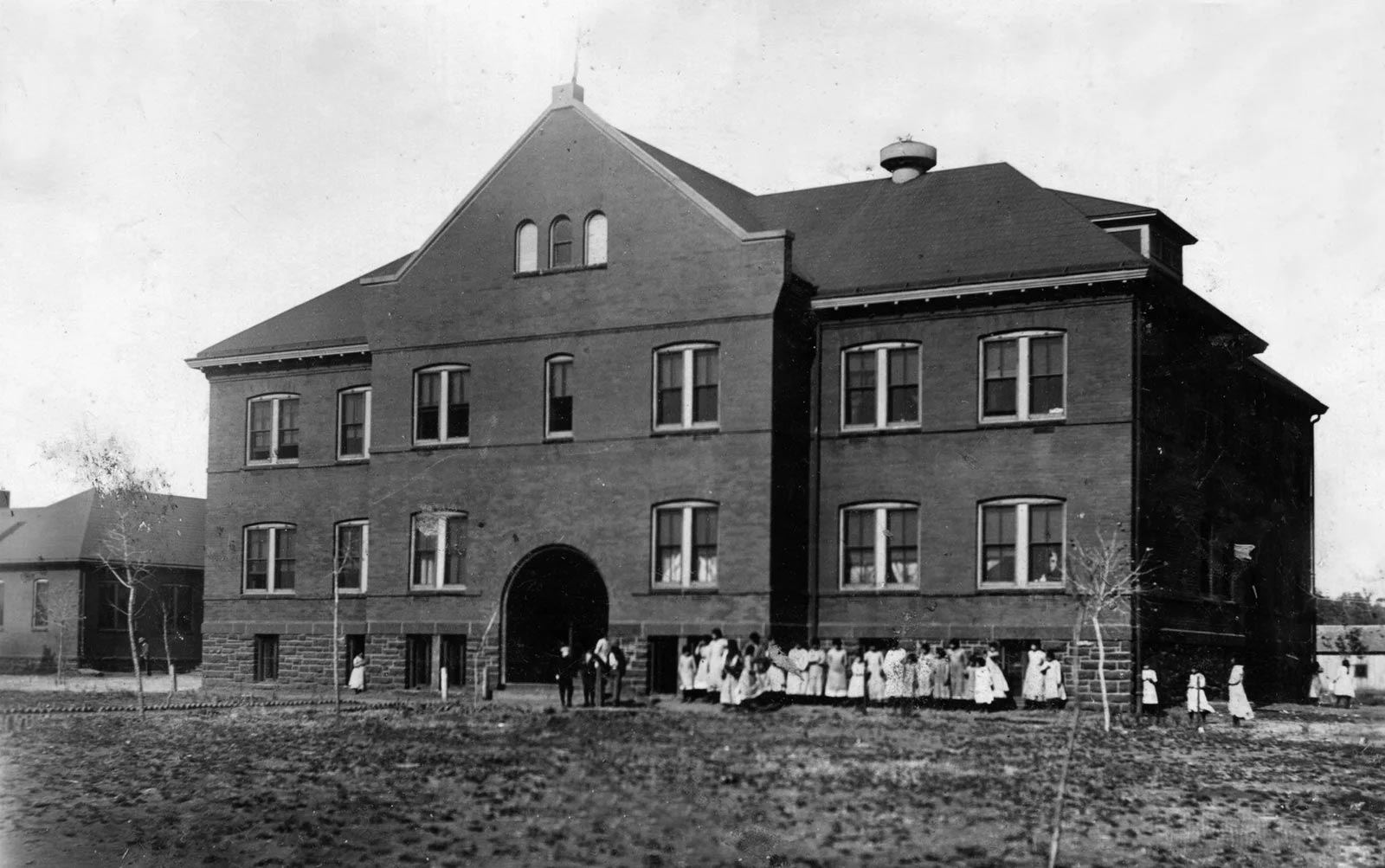 VIEW LARGER An old photo of the Riverside Indian School in Anadarko, Okla.
VIEW LARGER An old photo of the Riverside Indian School in Anadarko, Okla. Oklahoma at one time had the highest number of federal Indian boarding schools, more than 80, according to the National Native American Boarding School Healing Coalition. That's one of the reasons why it was chosen as the first stop on Interior Secretary Haaland's "Road to Healing" tour: a months-long effort to hear from boarding school survivors about their experiences.
In recent months, there's been a renewed spotlight on these boarding schools, after the Department of Interior, for the first time ever, admitted its role in creating the system in 1819 and enabling the physical and emotional abuse Native children were forced to endure while attending them.
A report issued by the department last year described how these schools were part of a long-running federal effort to erase Native languages and cultures and to force Native people to give up their land and adopt white culture.
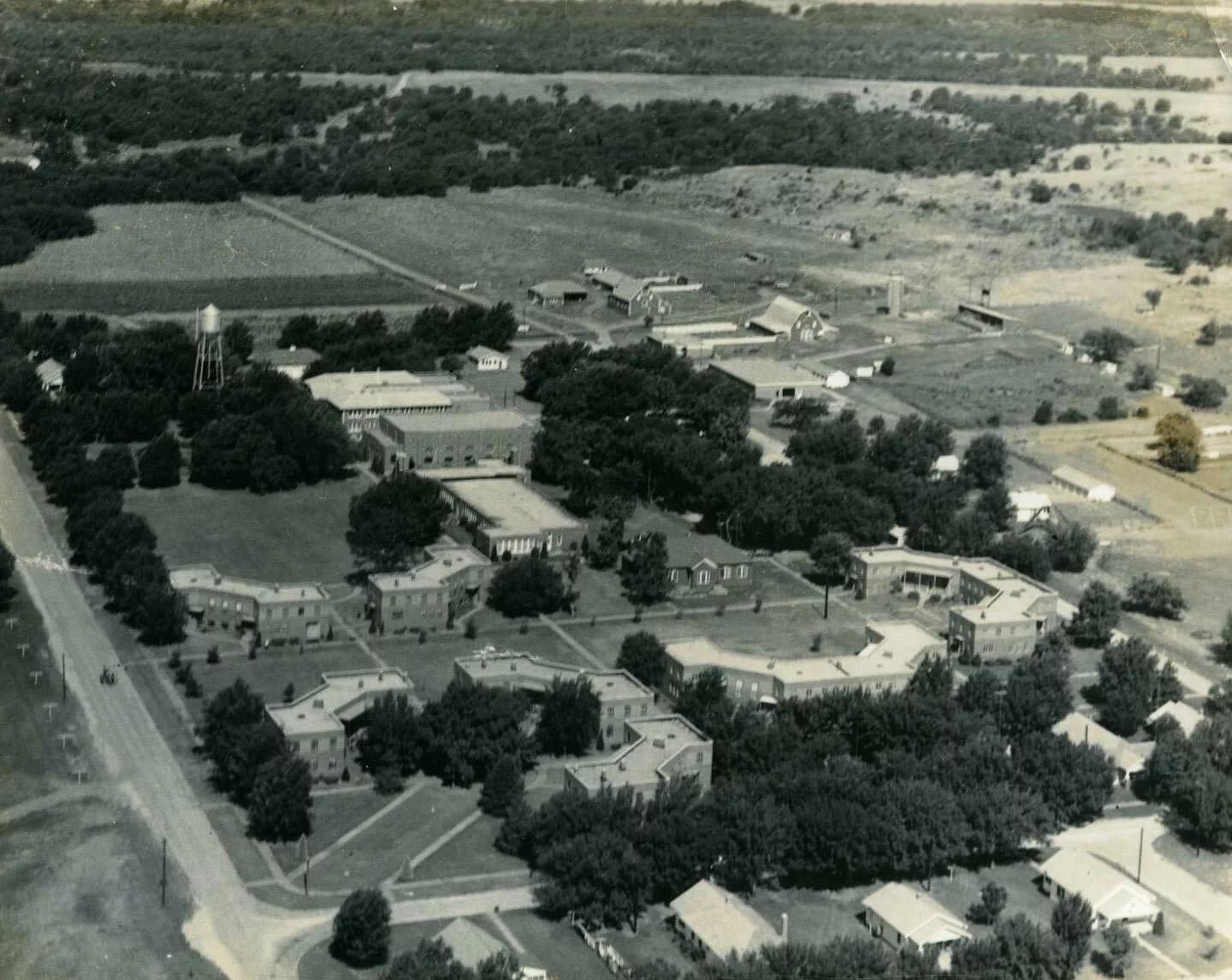 VIEW LARGER Riverside Indian School in Anadarko, the heart of Indian Country in southwest Oklahoma.
VIEW LARGER Riverside Indian School in Anadarko, the heart of Indian Country in southwest Oklahoma. Haaland's own grandparents were taken away and forced to attend boarding schools: "I want you all to know that I am with you on this journey, and I am here to listen," she told the crowd.
While many in the gym are survivors of the boarding school era, others came to learn and to listen. The history of these schools touched more than just the students who attended; their impact spans generations.
"I will listen with you, I will grieve with you, I will weep and I will feel your pain as we mourn what we have lost. Please know that we still have so much to gain. The healing that can help our communities will not be done overnight, but it will be done," Haaland said, while holding back tears.
In the mid-20th century, many of these schools shut down due to reports of neglect and abuse, while those that remained made enormous changes. Four are still open today.
Since Neconie and others attended, thousands of Native students have walked through the school's halls and dorms. And now, unlike during Neconie's time, students actually choose to attend Riverside. But why?
Riverside today
In many ways, Riverside looks a lot like any other school at 8 o'clock in the morning. The daily morning announcements blare over the PA system, and one or two stragglers hurry to class a few minutes late.
The sprawling campus is a mix of new and renovated buildings alongside older, run-down ones — some dating back to the school's inception. There are a few portable classrooms, an old red barn and a brand new basketball court, all overseen by Amber Wilson, the school's principal.
"Our staff works hard to make the students feel like they're at home," she says.
And for the students, Riverside is home. It's still a residential school, so there are dorms and recreational facilities that can make it feel more like a junior college than a high school or middle school.
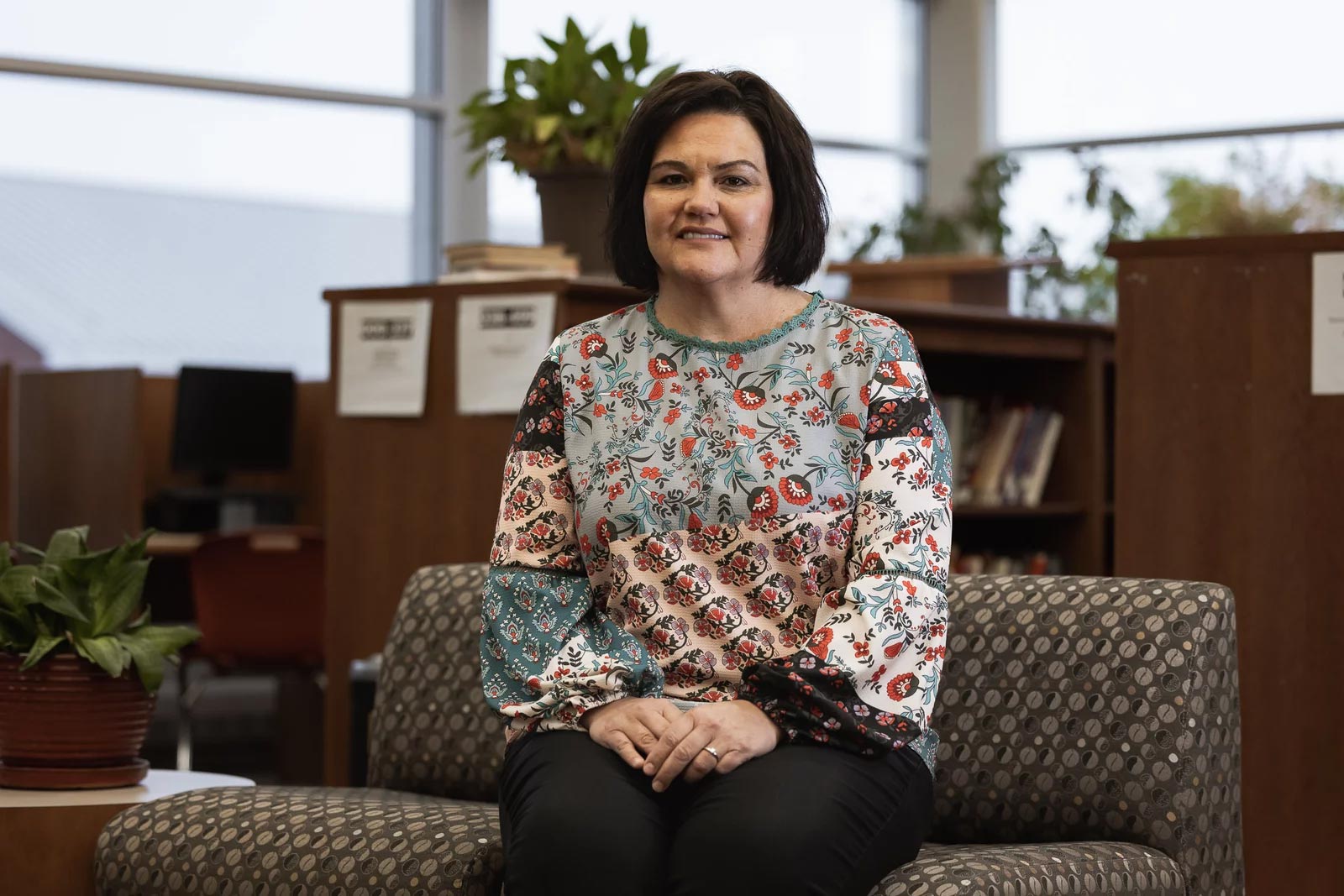 VIEW LARGER Amber Wilson taught at Riverside for years and is now the principal. She believes it is more important to move forward, rather than dwell on the school's past. "Our kids deserve what we can give them going forward."
VIEW LARGER Amber Wilson taught at Riverside for years and is now the principal. She believes it is more important to move forward, rather than dwell on the school's past. "Our kids deserve what we can give them going forward." "I always try to filter like, 'If it's good enough for my kid, it's good for anybody's kid,' " Wilson says. "That's how I've always run the school."
While Wilson and officials here wouldn't allow us to attend classes or interview students, she tours us around, commanding attention wherever she goes and saying hello to just about everyone.
Her cheery and unflappable demeanor translates into the decor of the school. The dorm common rooms are dressed up with patterned blankets and artwork on the walls. In the bathroom, even the shower curtains have bright pops of color.
She says they spent a lot of time decorating during the pandemic — Riverside was closed to students for 2020 and 2021. Her big project was turning one of the school's trailers into a beauty parlor for the students to pick out shoes, dresses and jewelry for prom.
That space is an explosion of pink and black velvet with lots of sequins. "We got our jewelry over there. We've got a little bit of candy for them," Wilson says. "This is a full prom experience."
Much of the school's decor is bright and exuberant, but also full of pride. From murals on the walls to newspaper clippings on the bulletin boards, everything shows American Indian students proud to be Indian.
Things that Donald Neconie never would have seen in his time here.
This new approach filters into the curriculum, too. Wilson says the cultural activities include drum-making, flute-making, dress and ribbon skirt-making, moccasin-making — even little things like dream catchers. The culture is integrated into as many classes as possible, especially Benjamin Blackstar's art class.
Blackstar attended Riverside as a student, then returned a few years ago to be the school's art teacher. He says a lot has changed since he attended, mainly newer buildings and more of a focus on cultural preservation.
Another big difference? Some of the students have taken to wearing traditional clothing — like ribbon skirts and moccasins — to feel connected to their culture.
"It's such an amazing sight to see," Blackstar says.
He felt a strong pull to come back to Riverside: His siblings also attended, and his parents met at a boarding school. Many students come to Riverside because their parents or their older siblings also attended the school.
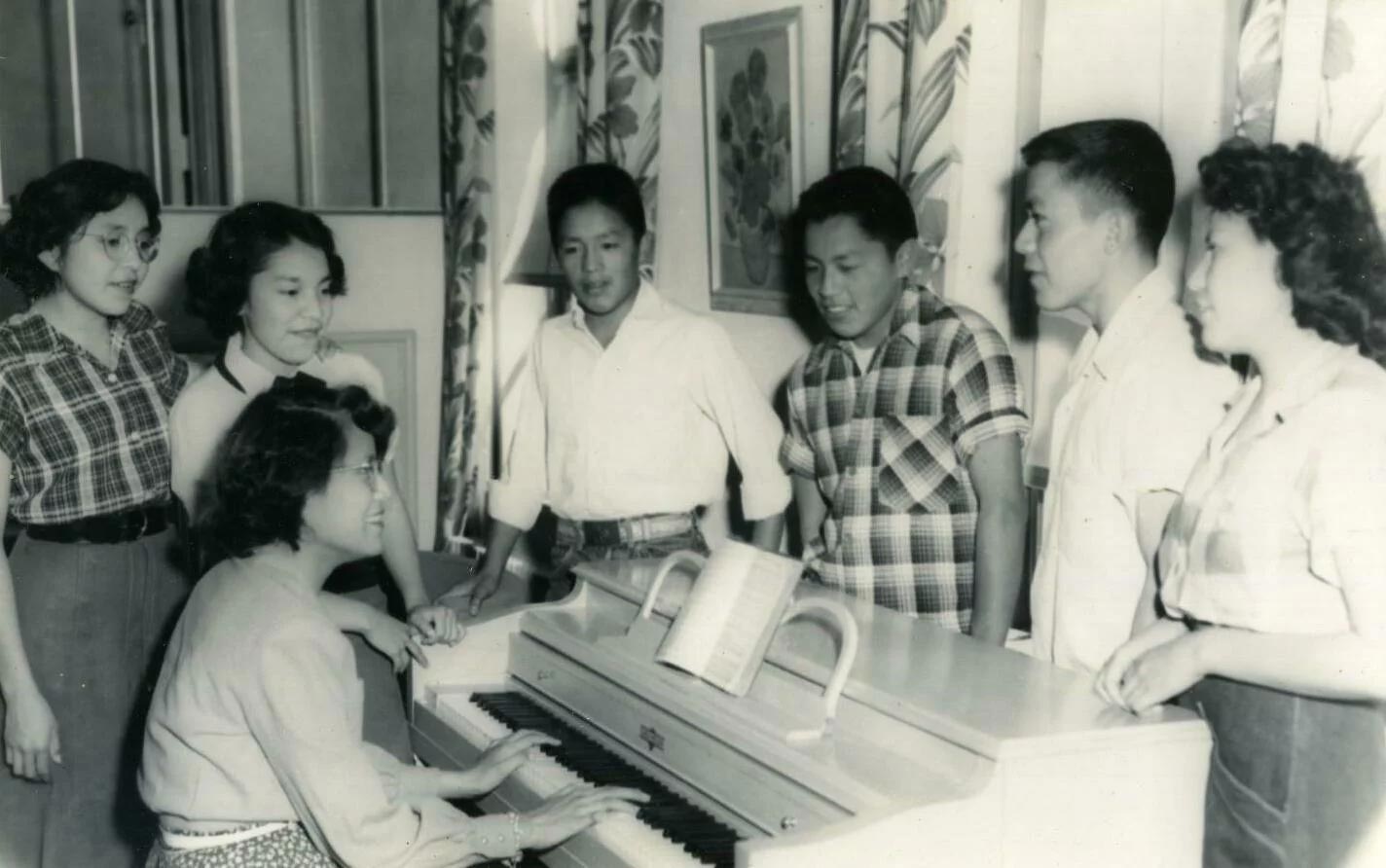 Students "singing old songs" at Keechi Cottage at Riverside in 1954.
Students "singing old songs" at Keechi Cottage at Riverside in 1954.
"We all have that goal, we all have that target, to educate these kids," he says. "That way they can go back to their reservations, to their communities and spread that."
Blackstar's grandmother went to Riverside, too — 75 years ago. He says she died before they could talk about her experience at Riverside, but he still sees her often — her school portrait hangs in the hallway outside his classroom.2
She's surrounded by portraits of the class of 1948; almost all of the students are smiling wide. Blackstar hopes his grandmother had a good experience here, when so many did not.
Dealing with the painful memories that the school holds is something that most of the teachers and administrators have trouble articulating.
Justifiably so, as these conversations are not a simple history lesson. For many teachers and administrators, the school's past is tied up in intergenerational trauma.
 VIEW LARGER Benjamin Blackstar teaches art at Riverside Indian School. He also attended school here as a student, along with his siblings.
VIEW LARGER Benjamin Blackstar teaches art at Riverside Indian School. He also attended school here as a student, along with his siblings. Wilson says the history of the school is not officially taught in the classroom. She says she believes the best way to heal from it is to move past it.
"All I can do is just go forward from where we are now and not dwell on the past. I'm not a person that looks in the rearview mirror all the time," she says. "I don't let things like that distract from the work that we're doing now and what we want to do."
And what they are doing now would have been mind-boggling to the students of decades ago.
But does the future at Riverside mean never looking back?
For some of the survivors of the boarding school system, the answer is no.
It takes a community
Lorenda Long, a citizen of the Navajo Nation, wants to make sure that Indian boarding schools still operating today are the best places for young Native students who want to attend.
She was in the gym at the summer event at Riverside and told Haaland and Assistant Secretary Bryan Newland about her experience at a federal Indian boarding school in Arizona: Lower Greasewood, near where she grew up on the Navajo Nation reservation.
She says she left after another student assaulted her when she was 9.
"I had never, ever been hit before," Long said about an older student. "I was in shock and I started crying, you know, and he just said some curse words to me."
Her mother pulled her out, but quickly sent her to another boarding school because she couldn't afford to care for Lorenda and her siblings.
At the Road to Healing event at Riverside, she spoke directly to some tribal leaders who were in the audience, telling them they needed to help their young tribal citizens get a better education.
"It's us that has to do something for our young people," she said. "We can't just expect Ms. Haaland to do it all by herself."

By submitting your comments, you hereby give AZPM the right to post your comments and potentially use them in any other form of media operated by this institution.